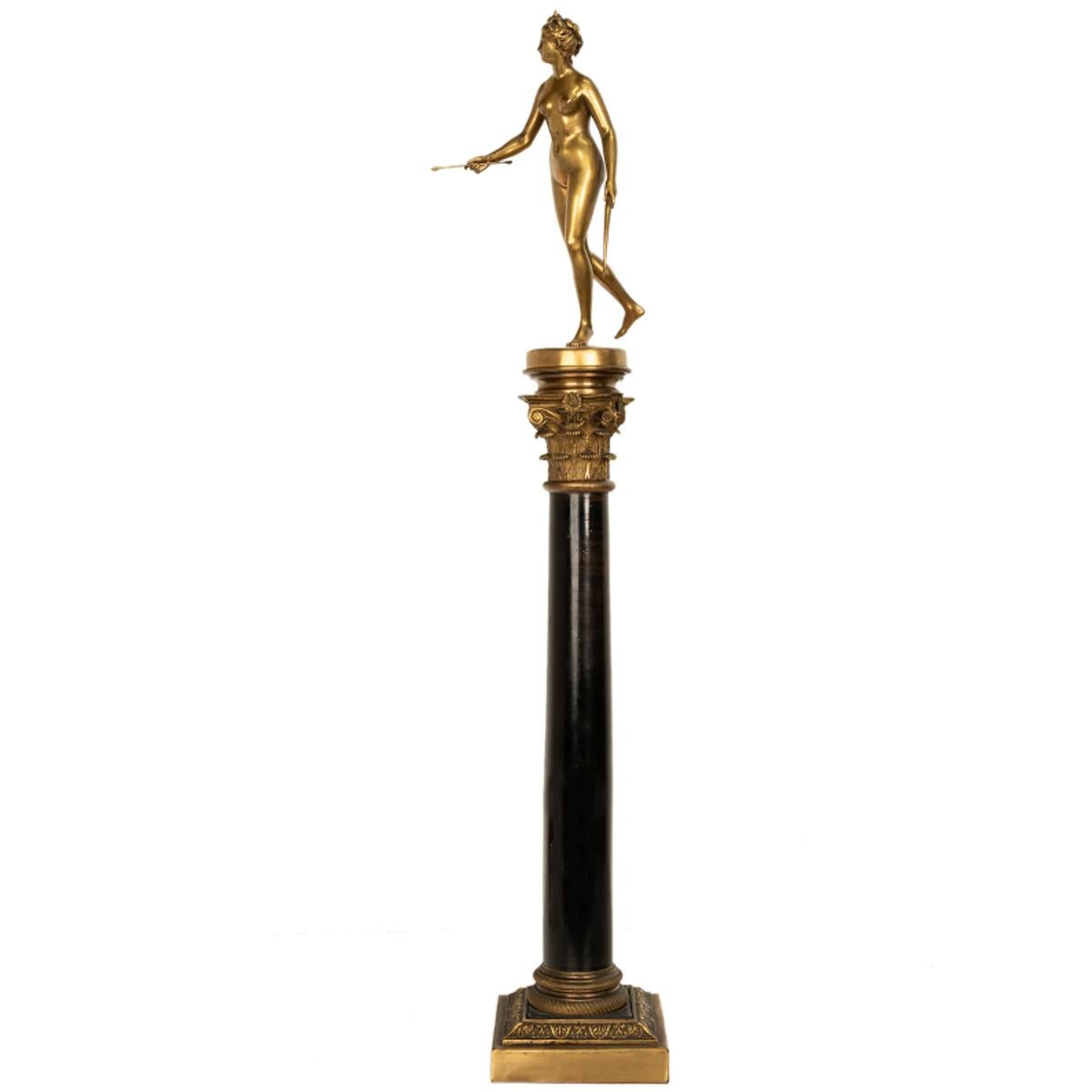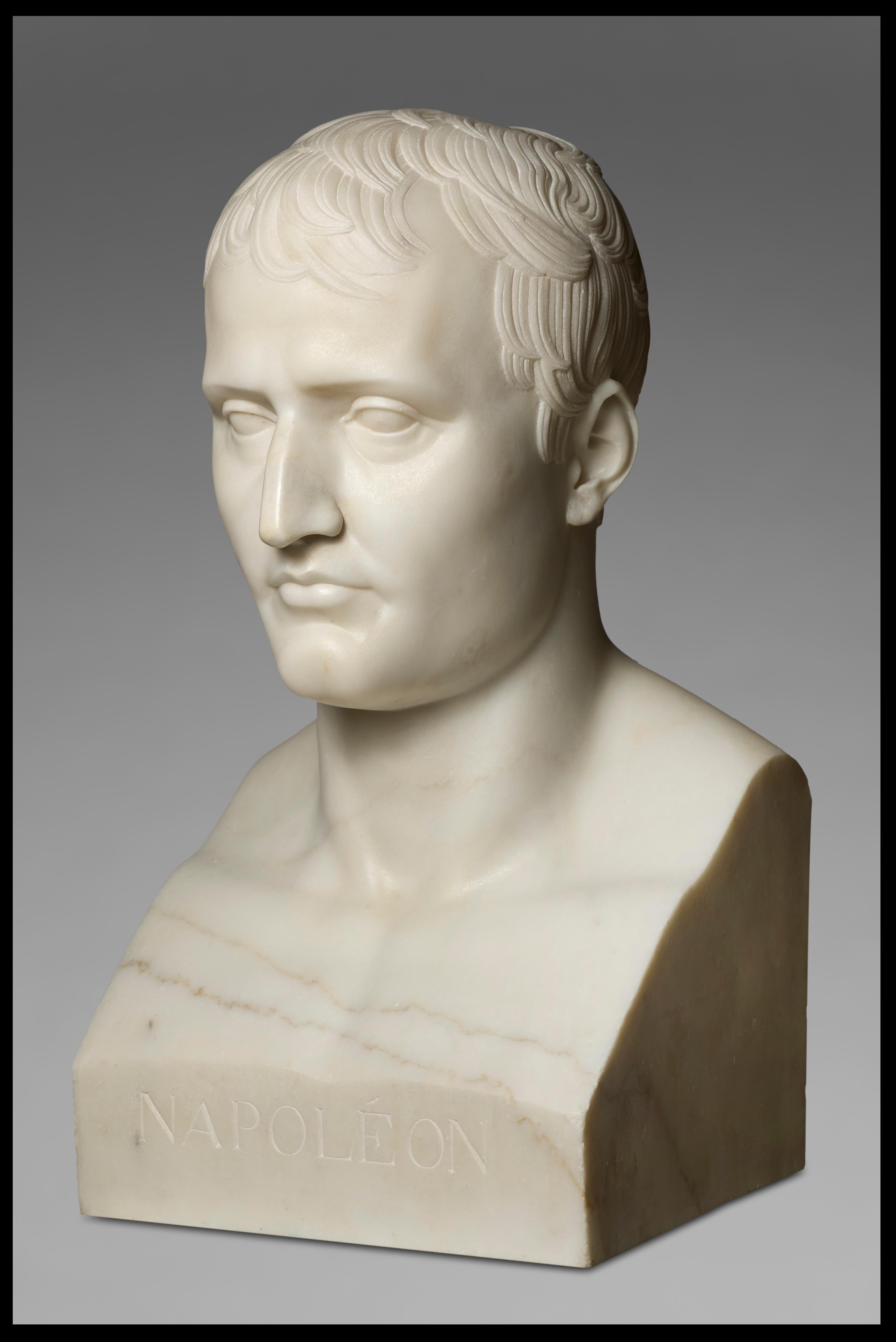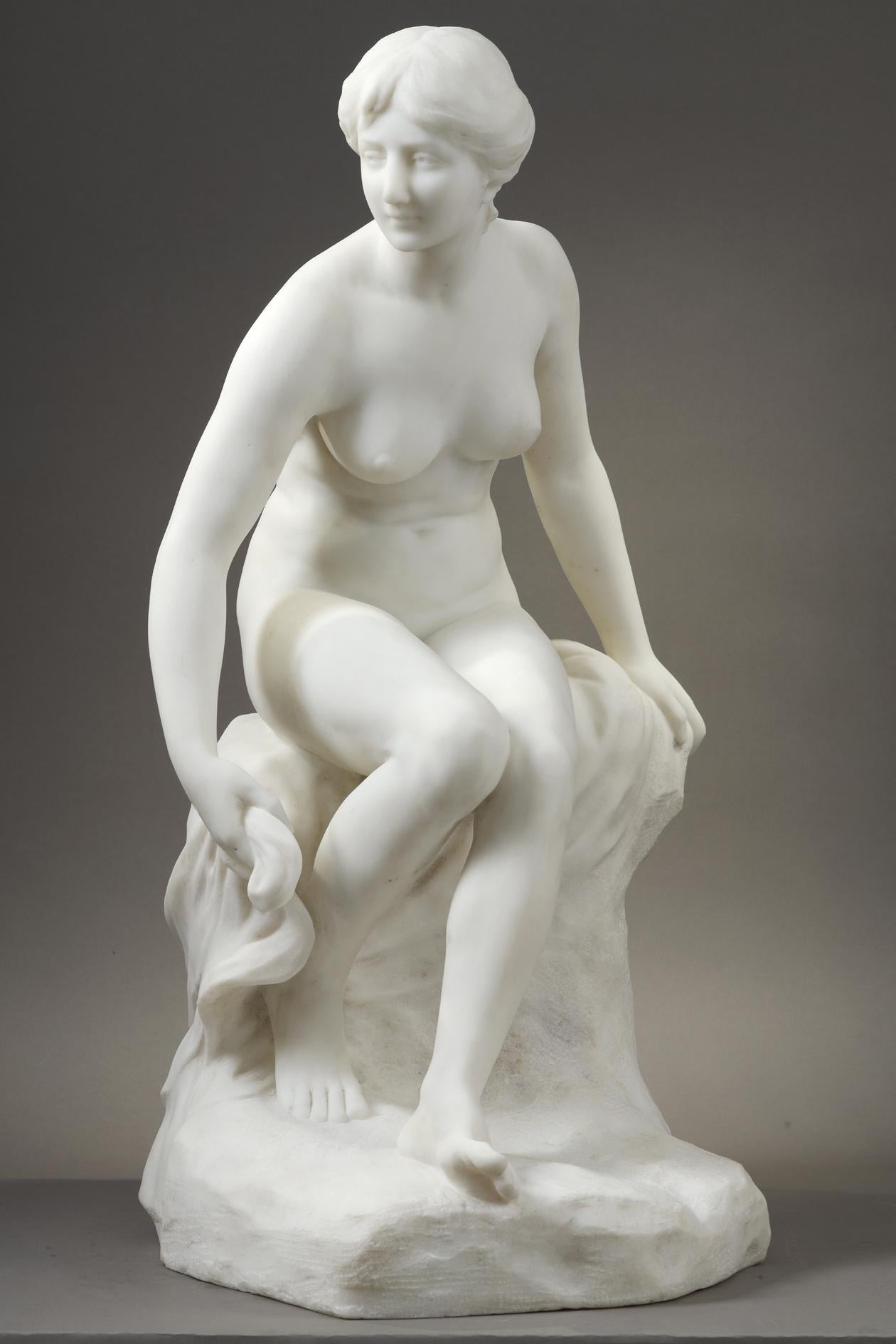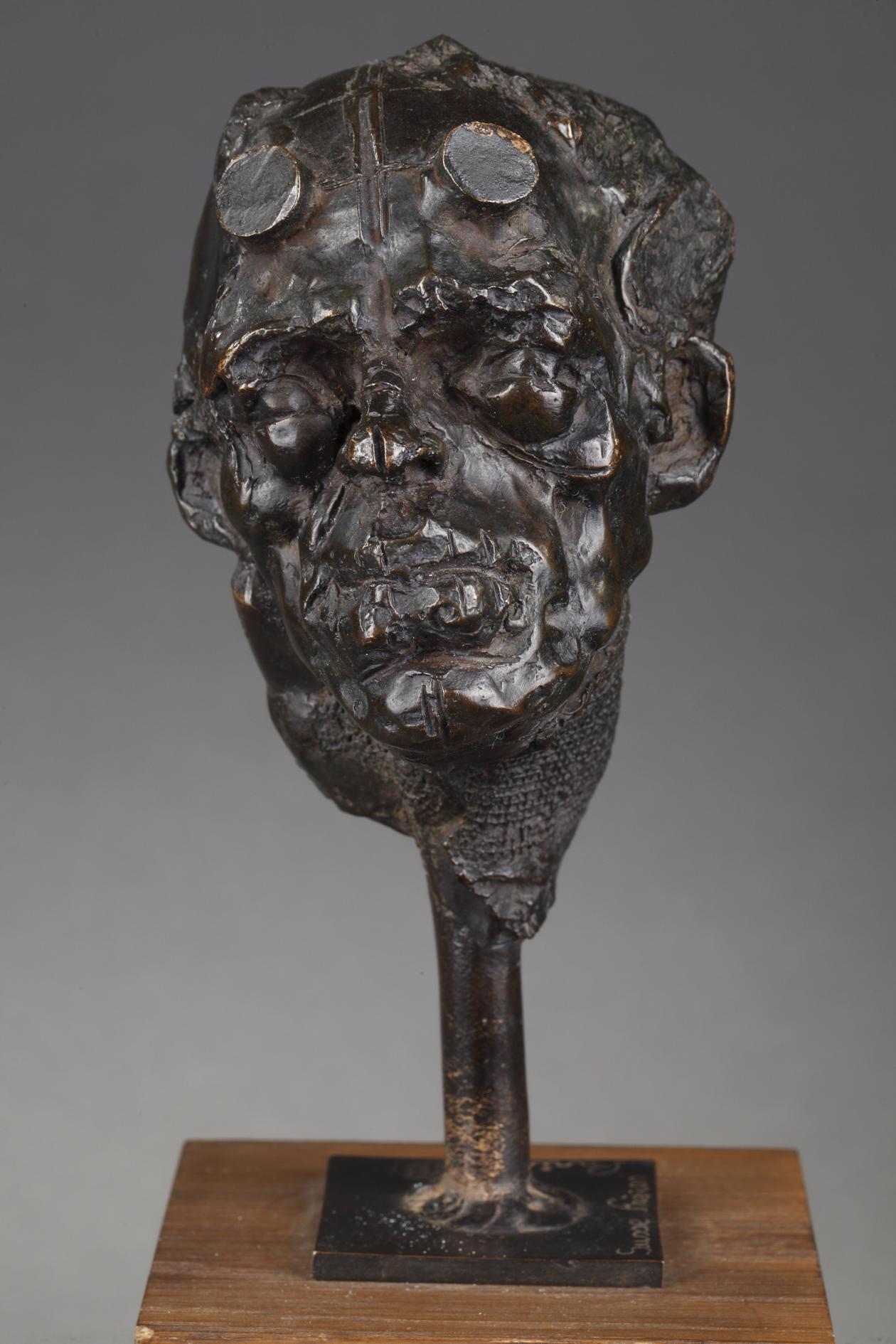Albert-Ernest Carrier-BelleuseThe Springcirca 1870
circa 1870
About the Item
- Creator:Albert-Ernest Carrier-Belleuse (1824 - 1887, French)
- Creation Year:circa 1870
- Dimensions:Height: 30.12 in (76.5 cm)Width: 11.82 in (30 cm)Depth: 9.45 in (24 cm)
- Medium:
- Movement & Style:
- Period:
- Condition:
- Gallery Location:PARIS, FR
- Reference Number:
Albert-Ernest Carrier-Belleuse
Albert-Ernest Carrier-Belleuse was a French sculptor. Carrier-Belleuse was born on 12th June 1824 at Anizy-le-Château, Aisne, France. He began his training as a goldsmith's apprentice. He was a student of David d'Angers and briefly studied at the École des Beaux-Arts. His career is distinguished by his versatility and his work outside France, in England between 1850–55 and in Brussels around 1871. His name is perhaps best known because Auguste Rodin worked as his assistant between 1864 and 1870. The two traveled to Brussels in 1871 and by some accounts, Rodin assisted Carrier-Belleuse's architectural sculpture for the Brussels Stock Exchange.

- ShippingRetrieving quote...Ships From: PARIS, France
- Return PolicyA return for this item may be initiated within 3 days of delivery.
- BatherLocated in PARIS, FRBather by Etienne Hachenburger (19th-20th C.) Sculpture in white Carrara marble Signed on the side of the base "E. Hachenburger" A simiilar model was exhibited at the Paris Salon oh...Category
Early 1900s French School Nude Sculptures
MaterialsMarble
- DucksLocated in PARIS, FRDucks by Josette HEBERT-COEFFIN (1906-1973) Sculpture made in stone signed on the base "J. H. Coëffin" France circa 1930 height 10 cm width 16,5 cm depth 14,1 cm Biography : Jose...Category
1930s French School Figurative Sculptures
MaterialsLimestone
- PheasantBy François PomponLocated in PARIS, FRPheasant by François Pompon (1855-1933) Exceptional bronze with old gilded patina Cast by Valsuani Period cast France circa 1930 height 8,2 cm length 14,2 cm width 3,6 cm A simila...Category
1930s French School Figurative Sculptures
MaterialsBronze
- Man's head wearing glassesLocated in PARIS, FRMan's head wearing glasses by Laurent Belloni (né En 1969) Bronze cast with a nuanced black patina Signed "Belloni" on the base Foundry mark "Susse fondeur Paris", and foundry stam...Category
1990s French School Figurative Sculptures
MaterialsBronze
- CentaurLocated in PARIS, FR"Centaur" by Laurent Belloni (born 1969) Bronze cast with a nuanced dark brown patina Signed "Belloni" on the base Foundry mark "Susse fondeur Paris" numbered 1/1 France circa 1996...Category
1990s French School Figurative Sculptures
MaterialsBronze
- Man's headLocated in PARIS, FRLaurent Belloni (né En 1969) Man's head Bronze cast with a nuanced black patina Signed "Belloni" on the foot Foundry mark "Susse fondeur Paris" numbered 1/8 France around 1996 hei...Category
1990s French School Figurative Sculptures
MaterialsBronze
- Antique French Grand Tour Gilt Bronze Statue on Column Diana the Huntress 1838By Ferdinand BarbedienneLocated in Portland, ORA fine & large (34" tall) antique French gilt-bronze on marble column of Diana, cast by Ferdinand Barbedienne (1810-1892) after a statue by Jean Antoine Houdon (1741-1828), the bronz...Category
1830s French School Figurative Sculptures
MaterialsMarble, Bronze
- Napoleon IstLocated in Paris, FRAntoine-Denis CHAUDET (1763 - 1810) NAPOLEON Ist, circa 1808 Carrare Marble - First Empire Hermes Bust of Napoleon Ist, after Antoine-Denis CHAUDET Dimen...Category
Early 1800s French School Figurative Sculptures
MaterialsMarble
- General Cambronne bust in "Hermès" - Att. to E-E Suc (1802-1855)Located in BELEYMAS, FRAttributed to Etienne-Édouard SUC (Lorient, 1802 – Nantes, 1855) Bust "in Hermès" of General Cambronne Plaster H. 59 cm 1842 Provenance: probably Madame Cambronne (1773-1854), widow...Category
1840s French School Figurative Sculptures
MaterialsPlaster
- L'AiglonBy Louis OuryLocated in Paris, FRLouis Oury (1867 - 1940) L’Aiglon, 1899 Terracotta with polychromatic patina Signed on the shoulder and Seal from Goldscheider on the reverse Dimensions : 65 x 40 x 30 cm (25 x 15 3/...Category
19th Century French School Figurative Sculptures
MaterialsTerracotta
- Antique Silvered Bronze Rooster, France circa 19th CenturyLocated in SANTA FE, NMAntique Silvered Bronze Rooster France, circa 1900 10 1/4 x 9 1/2 (H x D) inches A very fine and lively bronze statuette of a preening Rooster. Nicely cast and well-carved and in ex...Category
19th Century French School Figurative Sculptures
MaterialsSilver, Bronze
- Antique Bronze Dog Portrait of a Cavalier King Charles "Thigley" circa 1905Located in SANTA FE, NMAntique Bronze Dog Portrait of a Cavalier King Charles "Thigley" French School (possibly Franck Burty Haviland) Lost wax bronze casting Circa 1910 5 7/8 x 9 x 3 1/4 A sophisticated bronze casting of a Cavalier King Charles spaniel made in lost wax casting (cire perdue) from the beginning of the 20th century by Valsuani Foundry. This an unusual bronze approached in its aesthetic that’s reminiscent of the work of great animal sculptors of the second half of the 19th century except in this presentation which is more avant-garde for the time with a much looser, more impressionistic execution. The patina is a superb bronze color, brown and slightly greenish, going in places towards a more antique green. The attitude of the dog is extremely well and sensitively rendered with the placement of material unlike the renderings of a bronze by Barye...Category
Early 1900s French School Figurative Sculptures
MaterialsBronze




